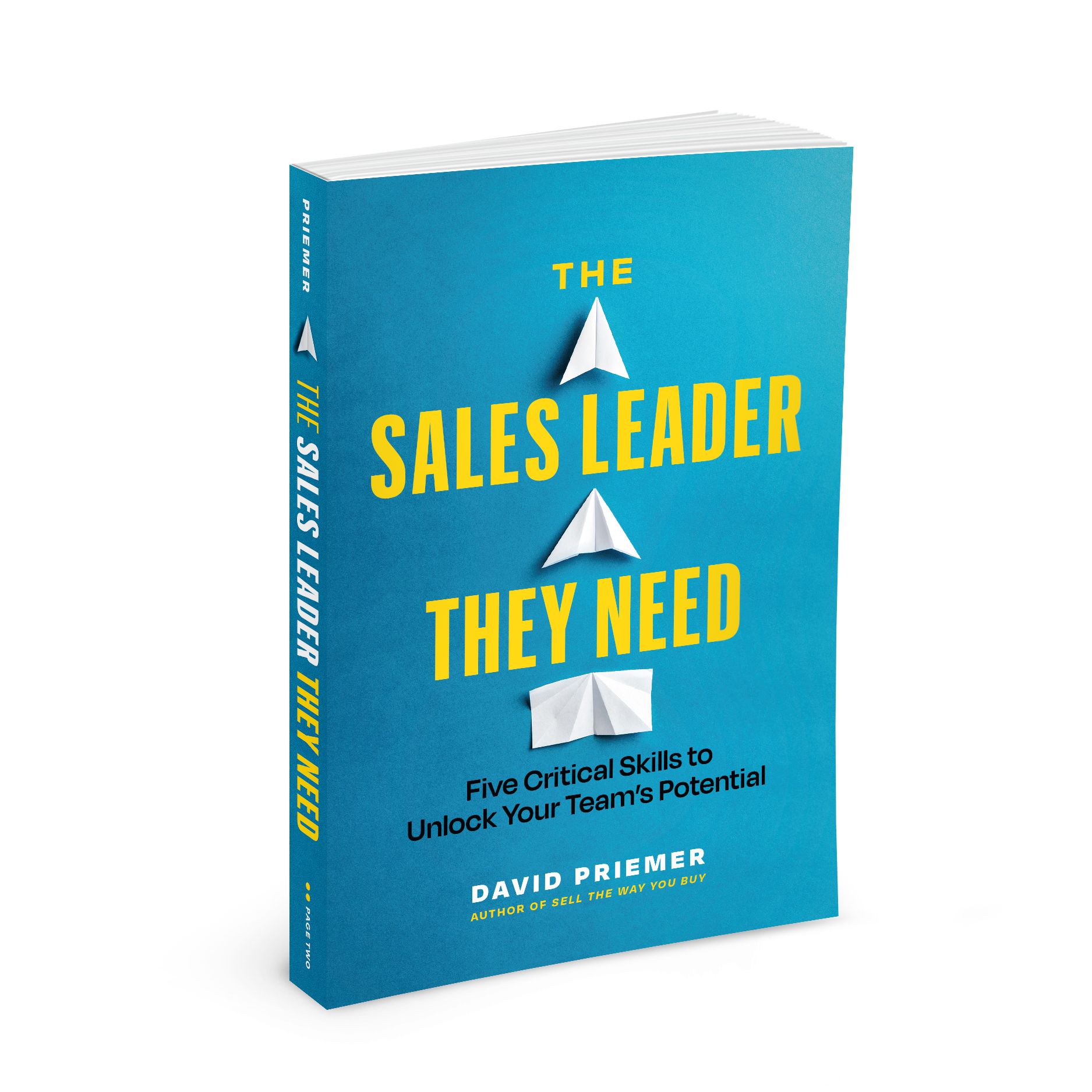Salespeople: Here’s Why Prospects Ignore Your Outreach
This article is the first in a two-part series. Read David’s second installment, Salespeople: Here’s How to Get Prospects to Pay Attention to Your Outreach, here.
As a sales leader at a B2B technology company, I was simultaneously a promoter and target of prospecting outreach. I encouraged my team to reach out to customers with respect, conviction, perseverance, and empathy. Yet, as a prospect, I was very hard to reach. I didn’t generally respond to cold emails or LinkedIn requests from business development reps (BDRs).
In the age of distraction, I looked for every opportunity to promote relentless focus and prioritization. It’s hard but apparently, I’m not alone. At the SaaStr Annual conference, David Skok from Matrix Partners gave a presentation on the “12 Levers of SaaS Success” to a packed house of technology entrepreneurs.
As a preamble to his discussion on sales funnel conversion (getting customers to do something they are not motivated to do, as he put it), David asked a simple question; “Who here uses business development reps (BDRs) as part of their lead generation strategy?” Seventy-five percent of the audience raised their hands. “Oh, yes, we love our BDRs don’t we,” he said as the hands lowered and the audience chuckled in agreement. “Let me ask you this,” he continued. “Who likes getting prospected by other people’s BDRs?”
Crickets.
If the very leaders who employ these tactics continue to build immunity to them, what hope do we have?
While I’ve long since believed that the future of sales will look very different than it does today, here are three fundamental issues I consistently see with prospecting outreach.
You don’t have my attention.
When I wake up in the morning and turn on my phone (OK, let’s be honest — it sits beside my bed and I never turn it off), I have about 20 new emails to read since the time I went to sleep. In his book Buy-In: Saving Your Good Idea from Getting Shot Down, author John Kotter says we’re bombarded with 520,000 proposals, plans, or ideas in a single year. In a typical day, we can be bombarded with six requests and four complaints from our family before 7:30 a.m., 14 things to remember from the radio program we listen to going to work, and dozens of new emails by the time we get to our desks.
Buyers are busier than ever and have scarcely little discretionary mental bandwidth. That means that sellers are finding the chain-mail armor that buyers once used to deflect your outreach has now been replaced with 6-inch reinforced steel. With all due respect to your valiant prospecting efforts or how amazing your solution is, I have a million (or apparently 520,000) other things to focus on. You don’t have my attention, and without first earning my attention, your message will fall on deaf ears.
You sound the same as everyone else.
I get about five BDR prospecting outreaches a day. Most look something like this:
Hi David,
I wanted to reach out because my company [insert vendor name] helps organizations like [insert your company name] [insert top 10 list of pain/value propositions every vendor claims — e.g., increase productivity, reduce sales cycle time, boost engagement, manage leads, improve conversion, connect with key prospects, etc.]
Our solutions have helped customers like [insert list of generic famous companies designed to impress me] see an improvement of [insert ROI stat].
Do you have 15 minutes to speak this week? Looking forward to hearing from you!
Now I know many of you reading this will say your outreach is different — that you pen a snappy/personal opening, use a unique format, include a screenshot of your app and customer quotes, start your subject lines with “Re:” or claim to never send cold emails. Or even better, that you first connect with your prospects on LinkedIn to build trust before making an ask.
News flash: You sound the same (and nothing screams “I’m prospecting you” like a LinkedIn invite from a BDR with zero context).
It’s important to note here that sounding “the same” is different than sounding “bad” (although it certainly can be). The problem with sales tactics (like the good old alligator email often used as a last-ditch effort to engage a silent stonewaller like me) is that they work for a while, so people fall in love with them, and then they become so pervasive that we become desensitized.
You haven’t sold me on the value of engaging.
If you want me to click the link you shared or give you the 15 minutes of my precious time you’re asking for, you’ll have to make a compelling reason why I should! The problem today is that there are so many solutions with overlapping footprints and value propositions it’s hard to differentiate them. And if your generic outreach feels the same as everyone else’s I assume your next step will be equally uncompelling.
Fair? Maybe not. Statistically reasonable? Absolutely.
In the Marketing Technology space alone, the number of vendors has increased from 150 in 2011 to over 8,000 in 2020. Many of these solutions (or new features for existing products) are not revolutionary but instead represent variations or improvements on existing solutions.
A great outreach tactic is like a great email subject line. Its purpose isn’t to convey your entire value proposition. It’s simply to stir enough interest and emotion in your customer to get them to lean in and want to continue the conversation.
Steve Krugg, author of the best-selling book Don’t Make Me Think, says that when prospects visit your website, if they can’t figure out what you do within seconds, they won’t stick around. The same applies to sales outreach. If your tactic doesn’t entice me to take the next step, I’m bouncing.
The world of sales is changing, and it’s getting harder and harder to get customers to part with their time and attention. If you find the effectiveness of your outreach diminishing, it may be time to revisit your playbook and take a different approach.
We promise never to send you junk or share your email! Just helpful sales insights.














David, as usual this is spot on. I get 3-5 LinkedIn messages EVERY DAY just for companies focused on lead generation, and to honest it’s hard to tell the difference between them as almost all of them say the exact same thing as the next with nary a hint of variance. Let’s face it, cold outreach is HARD, and people don’t like to be prospected, and we all have our pet peeves (I have two: when someone I’ve never spoken with tries to come across like a dear old friend, and the second is when a second or third follow-up says something lazy like “Any thoughts, Brad?” or “Just wanted to bump this to the top…”). I think the key is to get experimental and accept that you’re going to annoy some people, but try to keep in mind that with a sense of uniqueness comes a sense of standing out, and if you stand out enough it will lead to increased engagement, at least sometimes. And the people you annoy will forget about it 12 minutes later, so no harm done.